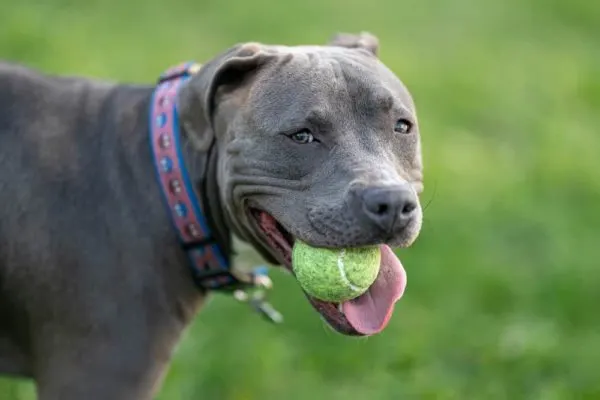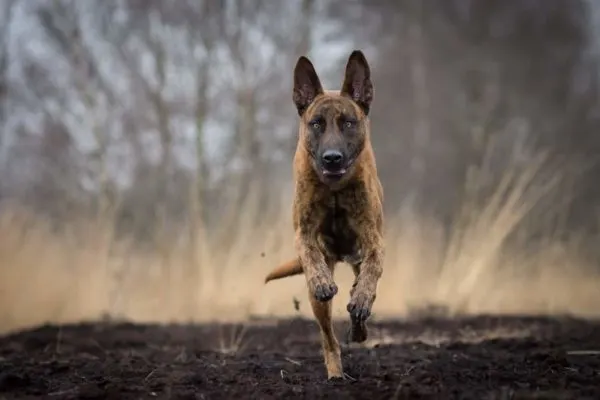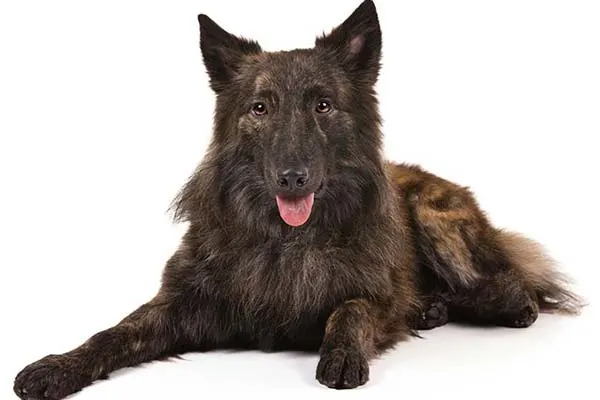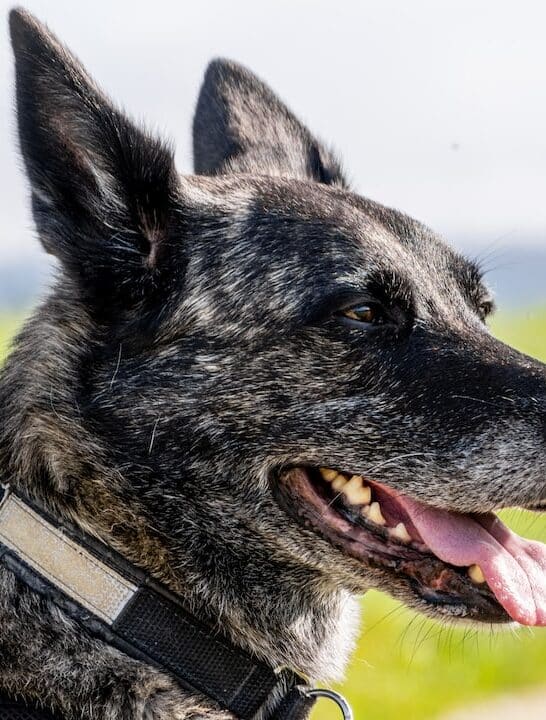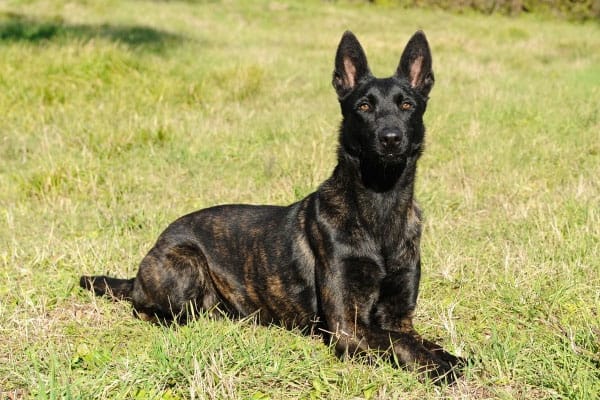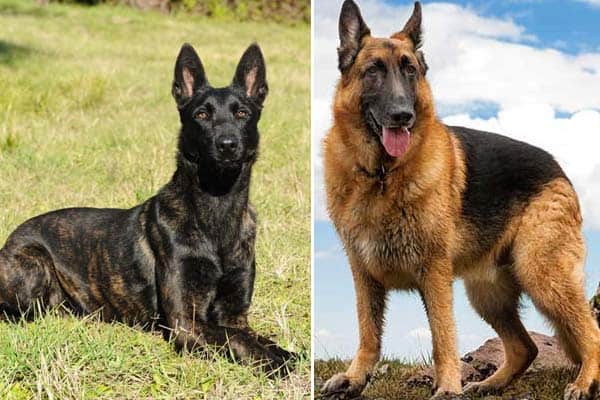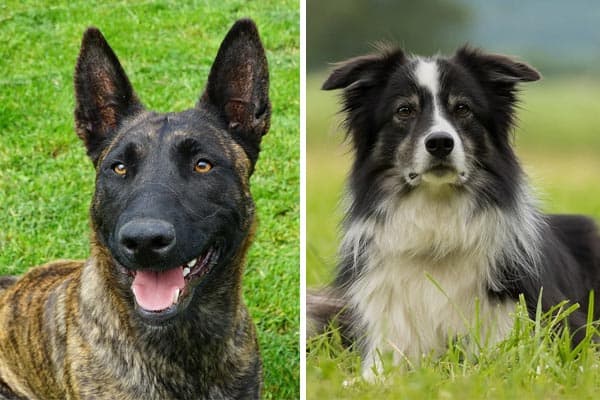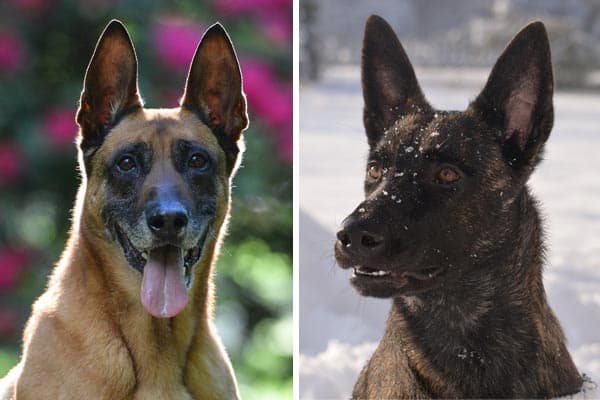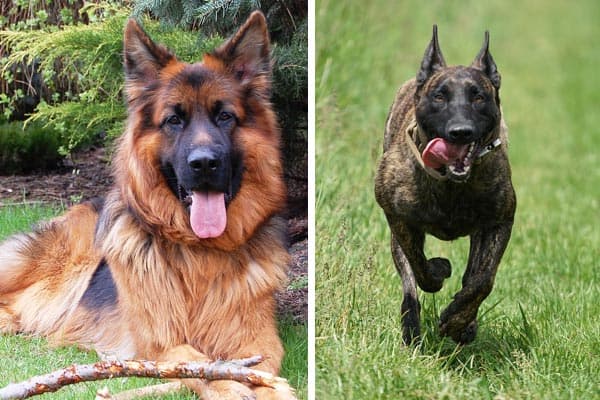How Should You See the Miracle of the Dutch Shepherd Pit Bull Mix?
There seems no shortage of Pitbull mention in the media. It is hardly ever a good kind of coverage, either. The words Pit Bull invoke fear and controversy. However, in numerous others, the Pitbull is a dog they admire, love, and want to have in their families.
What do you think when you hear or read of someone talking about Pit Bulls? To what do you attribute the wide spectrum of sentiment concerning the breed? The Pit Bull’s saving grace may be the mixed-breed dog.
There are numerous Pitbull crossbreeds. Have you ever pictured a Dutch Shepherd Pitbull mix before? While you would be guessing, like anyone else, facts about the two separate breeds make the image more realistic.
A dog comes into focus even more easily when you consider some of the Pit Bull’s traits that she passes consistently to her offspring.
The Dutch Shepherd Pitbull mix is most likely to be a black, brindle, or fawn medium-small dog who is active, loyal, and willing to please.
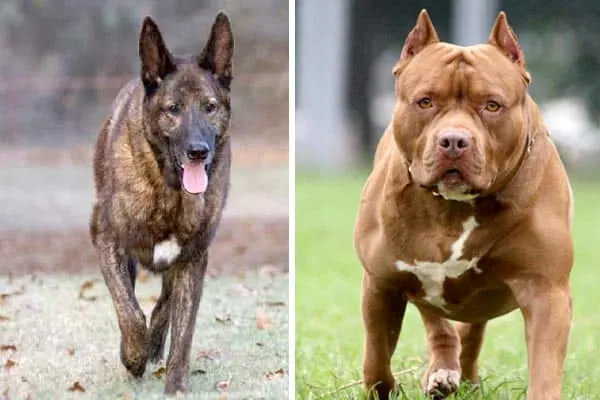
Where did the Dutch Shepherd Pit Bull mix originate?
Unlike the Labradoodle or Golden Doodle, the Dutch Shepherd Pitbull is not a designer dog, and the reason the mix occurs is a little blurry.
There exist two schools of Dutch Shepherd breeding; One aims mostly at revitalizing purebred lines, and the other promotes superiority in the Dutch Shepherd working dog.
More than likely, Pitbull bloodlines ended up in a couple of select Dutch Shepherd working dogs as an experiment to introduce tenacity and speed without sacrificing too much size or deviating far from the Dutchie’s original look.
A dog with Dutch origins was a versatile sheepdog.
There was a time when Dutch and Belgian Shepherds were interchangeable in the show ring. Before that, the Dutch Shepherd lines blended with both the Belgian and German Shepherd.
Belgian Shepherd breeders split off first from the group, creating a distinct breed standard in 1892. The Dutch Shepherd Club followed suit with their breed specifications in 1898, but while it made a clear split with the German Shepherd, the Dutchie was still almost indistinguishable from the Belgians.
Finally, in 1914, the Dutch Shepherd Club imposed strict color restrictions on their breed, proclaiming their dogs would only be brindle with no white. Who knows how many wrong-colored Dutchies suddenly became Belgian Shepherds in the mid-1910s?
Regardless of their color, Dutch Shepherds stood out as a versatile sheepdog that herded livestock during the day and undertook various other farm operations at night.
Since herding sheep on the heather meadows was not enough to carve out a living for anyone, Dutch Shepherds also were responsible for carting supplies, guarding the farm, and babysitting.
The Dutch Shepherd remains relatively rare as of 2020, joining the Foundation Stock Service of the AKC in 2012 and becoming a member of the Miscellaneous Class in 2017.
Full AKC membership in the Herding Class is contingent on maintaining the American public’s interest and participating in a set number of qualifying competitions.
An American dog with English origins redefines versatile.
Pitbulls, more formerly American Pitbull Terriers, originated in England right around the time lawmakers began vigorously enforcing the Cruelty to Animals Act in 1835. Bulldogs, whose main purpose was to bait bulls, had to find other work quickly.
You may think Pitbulls were always bred to fight other dogs. However, bull baiters first turned their attention to another sport called ratting. Dog owners would set their dogs against rats in a pit to compete for the greatest number of kills against a timer.
As was the case with other breeds in England, competitors bred their Bulldogs with Old English Terriers to produce quickness and greater ferocity while retaining power and size.
The exact timeline is muddy but thus was born the Bull and Terrier breed, eventually distinguishing itself from the Old English Bulldog and Toy Bulldog. While often used in bull-baiting, Bull and Terriers would find greater prominence as dogfighters.
The Bull and Terrier cross resulted in three separate lines. Staffordshire Bull Terriers became smaller and would eventually serve a primary role as companion animals.
Bull Terriers satisfied the goal of a white dog and would also become smaller pets. Pit Bull Terriers carried the primary lineage of arena gladiators.
Pit Bulls came to the United States via Massachusetts in 1889 mostly for dogfighting. They became versatile working dogs in the early 1900s, driving livestock as heeler types and rounding up feral cattle and hogs. They also served as hunting companions, mascots, and family pets.
Pit Bull Terriers never found recognition by the AKC, except for one family line, the American Staffordshire Terrier, in 1935.
The United Kennel Club recognized the Pit Bull in 1898 and the American Dog Breeders Association was founded around the American Pitbull Terrier, or APBT, in 1909.
Your dog will look mostly like a Dutch Shepherd
Your Dutch Shepherd Pitbull mix will most likely be brindle, seal, or black. The color seal is a black or dark brown with barely visible brindle markings. Your crossbreed may have minimal to moderate white markings on the chest, legs, belly, and face.
Your mixed dog will be compact, almost square, with upright ears, a black mask visible in brindle or fawn dogs, and relatively long powerful legs. The tail will be medium-sized and ropy, carried upward when the dog is in motion.
Your Dutchie cross will have moderately wide jowls and a slightly-shortened muzzle with dark almond-shaped mildly oblique eyes.
Your dog will strike you as powerful, focused, driven, and looking for direction during work. She should stand approximately 17 to 21 inches tall and weigh 45 to 70 pounds.
The Dutch Shepherd is different in appearance than the GSD.
The Dutch Shepherd should always be brindle, usually with a golden base. Silver brindles are rare and appear almost white.
However, genuinely white dogs are not acceptable. Yellow dogs, which show up as an expression of a recessive color trait, are also not acceptable.
A Dutchie is slightly longer than he is tall with a tail that reaches the hocks and has long hairs or plumes even in short-haired dogs.
The ears are medium and stand erect from the head, which is long and rather flat on top. Dutch Shepherds have dark eyes that have a slightly almond shape.
Dutchies range from 21 to 25 inches in height and weigh 50 to 70 pounds, according to Dogtime.com.
Pit Bulls change physical features only a bit.
Pit Bulls can be a wide range of colors, but many are recessive to brindle. Therefore, Dutch Shepherd coloring often prevails in mixed puppies of the two breeds. Pit Bull colors are:
- Red – Recessive to all colors except white; comes from one family line
- Tan
- Fawn
- Brown
- Grey
- Brindle
- Blue – Dilute black
- Black
Pit Bulls have a characteristically broad head with a flat skull and wide, fairly deep muzzle. They have round eyes that are dark in black and brindle dogs and amber or hazel in lighter-coated Pits. Their cheeks appear high and well-defined and their ears high set and semi-pricked when natural.
Many Pit Bulls have cropped ears in North America.
Pitbull Terriers have a tail that often does not quite reach the hocks, but it is thick and powerful. Pit Bulls are compact in shape with a muscular build. They are 17 to 20 inches tall and weigh 35 to 60 pounds. They should show balance and have no exaggerated features.
What will temperament be like?
Temperament is not always predictable in mutts, but you will note a few consistent personality traits in the Dutch Shepherd Pitbull mix. Most will be highly energetic, driven, intense, eager to please, and intelligent. They should exhibit neither shyness nor aggression towards people.
Your Dutch Shepherd mix will be friendly with strangers and probably welcome any overtures of affection.
You should also see a friendly dog who will share her attention with all members of the family but maybe more obedient to one or two. Your mix will be loyal and affectionate.
Drive and focus come from the Shepherd.
Rather like the German Shepherd, the Dutch Shepherd has tremendous focus and incredible drive.
Although they do not exhibit quite the joy with working as the GSD, those familiar with the Dutch Shepherd describe them as workaholics. Their focus on their handlers is always a remarkable sight, although they can also work independently.
You will notice the desire to keep busy in your Dutchie mix.
The Pit Bull is exuberant and joyous.
Where the Dutchie is animate, the Pit Bull Terrier is almost hyper. Given to boisterous displays of enthusiasm, much like a Labrador Retriever, Pit Bulls always seem ready to perform. They show an eagerness to please, to a degree rare among bully breeds.
Your dog may not be the greatest guard dog
Your Dutch Shepherd Pitbull hybrid will probably be a good watchdog. Dutch Shepherds are excellent guard dogs and bark when they notice approaching intruders on their property. However, Pit Bulls are friendly dogs, bred to be nonaggressive against humans.
Pit Bulls also are not big barkers. Therefore, you have to rely on the protectiveness of the Dutchie to provide an alert system for your household.
Do not expect your Dutchie mix to display much aggression or protectiveness against trespassers unless he inherits most of his disposition from the Dutch Shepherd parent.
Grooming should be a breeze
Your Dutchie Pittie mix will have a short-haired coat. She may or may not also have an undercoat of variable density. Therefore, you can brush your dog once every few days or twice weekly.
Brushing removes loose hair and also restores the coat’s sheen by distributing skin oils throughout the fur. If your Pitbull has an undercoat, she may have a large shed twice a year in spring and fall.
Dutch Shepherds have three coat types, short-haired, long-haired, and wire-haired. All varieties have a dense woolly undercoat that keeps the dog warm in winter and cool in the heat.
Your mix will not likely inherit any other coat type than short because long-haired and wire-haired Dutch Shepherds are much rarer.
Therefore, long-haired and rough-haired DS owners have little interest in creating a mixed breed with their dogs. Moreover, the short-haired gene is a dominant trait over other coat lengths.
Pit Bulls have a dense, short single-layer coat that they shed continuously.
As a result of the Pit Bull coat, your Dutchie mix will not have quite as much weather adaptability as a purebred Dutch Shepherd.
Watch your dog’s health as a puppy
Dutch Shepherds and Pit Bull Terriers are largely performance-bred and therefore have a few different health issues than you would expect in conformation show champions.
Your puppy may inherit a few difficulties associated with her parent breeds. Any hair loss, vomiting, or diarrhea in a puppy requires you to contact your veterinarian immediately.
Hip and Elbow Dysplasia – American Staffordshire, Pit Bull
Hip and elbow dysplasia, a developmental problem in the respectively named joints that can cause pain and progress to arthritis, is rare in Dutch Shepherds with a working and performance ancestry.
However, conformation-oriented dogs, aka the American Staffordshire Terriers, have much higher incidences. The OFA states the Staffie had hip dysplasia at a rate of over 25% in 2019 compared to the Dutch Shepherd’s 8%. Pit Bulls, however, also have an alarmingly high rate of hip dysplasia at 22%.
Since your dog is likely to come from working stock if anywhere, his probability of developing hip or elbow dysplasia will be relatively low.
Degenerative Myelopathy – American Staffordshire, Dutch Shepherd
An unlikely scenario in your mixed dog, degenerative myelopathy, involves progressive loss of nerve function to the hind end. Affected dogs eventually become paralyzed.
Many people think of DM as a German Shepherd disease, but Dutch Shepherds and Staffordshire Terriers show a case rate of around 4% and 11% respectively. Pit Bulls in 2019 had a disturbing incidence of degenerative myelopathy of about 17%.
Bloat – Pit Bull Terrier mostly, but also DS
Bloat is a devastating condition that usually affects large-breed, deep-chested dogs. Pitbull Terriers seem overrepresented for their size.
Make sure to split your mixed breed’s food intake into multiple meals throughout the day. The minimum you should feed your dog is twice a day but ideally three times. Always feed dogs, so they eat with heads down.
Some owners feed their dogs on an elevated surface, and such practice is necessary for specific diseases like megaesophagus. Elevating dog food is linked to bloat in dogs.
Obesity – Pit Bull
Pit Bull Terriers are prone to obesity due to a lack of exercise. Being overweight potentially contributes to the Pit Bull’s surprisingly high incidence of hip dysplasia.
Demodectic mange – Pit Bull Terrier
The focus on performance led many Pit Bull owners to neglect the immune system in their breeding programs. The result is an overgrowth of a mite that naturally lives in the skin, and this proliferation causes loss of hair.
In localized Demodex, puppies lose hair in tiny patches usually on the face and toes and eventually outgrow it when their immune system matures.
Generalized Demodex is much more severe, causing hair loss over the entire body and secondary bacterial skin infections. Previously carrying a grave prognosis, generalized Demidicosis is now largely curable, according to Veterinary-practice.com
Parvovirus – Pit Bull Terrier
Parvovirus is a virus that attacks the lining of the small intestine, causing vomiting and diarrhea and leaving severely infected puppies weak, dehydrated, and critically ill.
Its high prevalence and severity in Pit Bull puppies suggest a compromised immune system with a probable hereditary basis. Pit Bulls require three or four booster vaccinations weeks apart to receive complete immunity against parvovirus.
Atopy – DS and Pit Bull
Atopy is a skin allergy that can cause severe itching and secondary infections or rash.
Pit Bulls have an average life expectancy of 11 to 13 years while Dutchies can live typically 12 to 15 years. Your mixed breed should have a lifespan of about 12 to 14 years.
What should you know about intelligence and training?
Neither Pit Bull Terriers nor Dutch Shepherds received an intelligence ranking from Stanley Coren as he only rated AKC-registered breeds.
However, the American Staffordshire Terrier ranked 48th, according to Thesmartcanine.com, on par with the Newfoundland and Gordon Setter. Dutch Shepherds may be similar because of their stubbornness but could rank as high as the Belgian Malinois in the mid-20s.
Your mix will be of above-average working intelligence and, with his willingness to please you, will prove quite obedient.
Dutch Shepherds have independence that requires a confident personality from their owners. Once you obtain a Dutch Shepherd’s respect, however, they become attuned to your commands, similarly to a GSD.
For the experienced dog owner, most Dutch Shepherd Pit Bull crosses should be easy to train.
Your mix needs plenty of socialization on top of training, addressing the most important elements by the time she is 16 weeks old. Naturally bold, your Dutch Shepherd mix should adjust to new sights and people with ease.
Exercise is where happiness lies for dogs
Dutch Shepherds require an hour and a half to two hours of exercise daily. They have tremendous stamina, as well as a mind that needs engagement.
Pit Bull Terriers, although they vary greatly in their activity needs, require more exercise than most people give them. A good starting point is 60 to 75 minutes of daily incorporation training, strenuous exertion, and socializing.
Your adult Dutch Shepherd Pit Bull mix should get at least an hour and twenty minutes of exercise a day. Make sure to incorporate full-out runs or activities that combine physical skills and logic.
Activities
- Lure coursing – May satisfy the predatory drive
- Protection work
- Shutzhund
- Dock diving – Many Pit Bulls enjoy the water
- Agility
Nothing helps your dog stay out of trouble better than an interactive or competitive activity she can do with you.
What about the dreaded question of children and other dogs?
The best approach for any Pit Bull mix is to judge an individual’s temperament with a healthy respect for the dog’s background, if away from you, and ancestry.
Dutch Shepherds are not typically dog-aggressive, but with their deep history of dogfighting, you must assume most Pit Bulls are. Males will usually be more aggressive than females, and you can moderate some of it by neutering your pet.
Many Pit Bulls are sweet with other animals. Still, it is difficult to assess how much training and socialization it took to accomplish it.
Socializing your Dutch Shepherd mix will help tremendously with teaching her how to behave around other dogs, and most should do well with other canids in the house.
Pit Bulls are terriers and have an innate desire to destroy little creatures. Some shelters received bad publicity for adopting out well-screened Pit Bulls who ended up being cat killers. Acknowledge your dog will probably inherit a strong prey drive, and keep her away from small animals.
As the controversy surrounding Pit Bull Terriers escalates, concern rises concerning the most vulnerable of the population, children, and the elderly.
Pit Bulls and Dutch Shepherds both cohabitate fine with children. In history, they assumed similar roles, guarding children who lived on rural farms.
However, both breeds are also capable of catastrophic injury to children. You should never trust a dog alone with a child, regardless of breed.
With early socialization, your dog will be a loving and mildly protective companion to your kids. Always remain vigilant with your dog and strangers, and pay attention to your dog’s body language concerning anyone, new or familiar.
Conclusion
The Dutch Shepherd Pit Bull mix is a rare cross. Traits are largely speculative.
A compilation of blended features results in the portrayal of a loyal and friendly dog who is affectionate and slightly protective of family members.
He can learn through extensive socialization to play well with other dogs and accept them into his household. He needs extensive training, exercise, and mental stimulation.
He will likely be a black, fawn, or brindle dog with a wide muzzle and head that is not particularly blocky, a compact frame about 20 inches tall and weighing 50 pounds, short hair, a sparse undercoat, a whip-like tail, and upright ears.
He will be a working dog with a high drive and remarkable potential for a variety of activities, including law enforcement and narcotics detection.
The KNPV produces premium working dogs originally aimed to promote the Dutch Shepherd. Since working dogs often benefit from outside breed influence, and looks are not as important as ability, candidates for the program can have mixed pedigrees. Although many are paperless, breeders know the ancestry of each dog.
Dutch Shepherd Pit Bull Working Dog
This dog portrays an ideal working-type dog. Note the broad face and wide muzzle, but the upright ears and a certain refinement of the skull betrays it is not a Pit Bull Terrier. Note the dog is compact, well-balanced, disciplined, and heavily muscled.
Purebred Working Dutch Shepherd
A Dutch Shepherd in similar work. Notice how the Shepherd types seem to bring additional intensity to their work.
This Dutchie is a brindle short-haired type with the noticeable plumes on her tail. Her size is similar to the Pit Bull mix’s as is her compactness. The styles vary quite a bit as this dog is still in early training.














